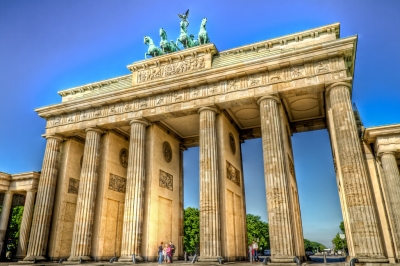![Heimaey Panorama (Thomas Quine) [flickr.com] CC BY-SA
License Information available under 'Proof of Image Sources' Heimaey Panorama (Thomas Quine) [flickr.com] CC BY-SA
License Information available under 'Proof of Image Sources'](/wp-content/uploads/reiseziele/heimaey-panorama31577.jpg)
Blossoming moss landscapes, spectacular fjords, gigantic volcanoes and fascinating lava deserts – Iceland, the island of fire and ice, is a paradise for every nature lover. The island in the North Atlantic extends as far as the Arctic Circle. Huge geysers, hot springs and extensive lava and ash fields characterise the landscape. The country is filled with contrasts, secrets and surprises. In winter the magic of the polar lights lures, in summer the midnight sun enchants.
And even the pulsating capital Reykjavik spoils you with countless sights, a lot of culture and a hip art scene. Along rugged peaks, over meadows with arctic flora to colourful rhyolite mountains, visitors follow in the footsteps of the Vikings. At the same time they enter the mystical world of elves and trolls.
Below we present you the most exciting tours, the most beautiful attractions and the best sights in Iceland.
1. Capital ReykjavĂk
On the southwest coast, the Icelandic capital impresses with impressive buildings, museums and culinary highlights. Small houses with red, blue and green roofs give the town an almost village character. However, the sight of smoking chimneys is missing. The colourful cottages are heated exclusively with geothermal energy. The centre of the town is the Tjörnin, a small lake with parks. Around him are most of the sights. Architectural pride of the city is the Harpa Concert Hall, which opened in 2011.
It symbolizes Iceland’s resurgence after the financial crisis. The landmark of the town is the outstanding HallgrĂmskirkja. From the 73 meter high church tower you have a fantastic view over the city and the sea. The National Museum is in the immediate vicinity. There is an exciting overview of the settlement history up to the 19th century. Tip: On the wooded hill Ă–skjuhliĂł there is a futuristic glass dome Perlan with a viewing platform. A visit to the famous Saga Museum is worthwhile.
2. Waterfalls in front of the green city of Akureyri
Surrounded by 1.500 meters high mountains, in the northeast of Iceland, lies the second largest city at the edge of Eyjafjörður. The Akureyrarkirja church, completed in 1940, rises above the fjord. A large open staircase leads to the building. Those who climb the 112 steps enjoy a magnificent view. Afterwards a walk through the green city with a visit in the botanical garden is worthwhile.
The garden not only inspires with its extraordinary variety of plants, it is also the northernmost of its kind in the world. Not far away are the waterfalls GoĂ°afoss and Dettifoss as well as the islands Grimsey and Hrisey. While Grimsey can be reached by a regular plane from Akureyri, time seems to stand still in Hrisey.
3. Gigantic glaciers in Skaftafell National Park
The Skaftafell National Park lies like a green oasis in the middle of a huge glacier area. With its heath landscape, the area around the former Thingstätte Skaftafell forms an impressive contrast to the black gravel plain and the white ice masses. A hike offers spectacular views with an unforgettable panoramic view of the Vatnajökull. The ice masses of Europe’s largest glacier are up to 1000 metres thick in some places.
Every five years, huge masses of water flow far into the glacier foreland. No less impressive is the Svartifoss waterfall, one of Iceland’s most beautiful waterfalls. The 20 metre high black basalt columns look like organ pipes over which the “Black Fall” plunges into the depths. About 60 kilometres further west, the largest historical lava eruption on earth once began. On a distance of 25 kilometres there are over 100 craters of the volcano Laki.
4. Whale watching before HĂşsavĂk
The lively Nordic city is an ancient settlement area and attraction for whale fans. In summer, numerous species of whales off the coast are among the most exciting sights on Iceland and can often be observed very close. First, the Whale Museum provides information about the biology and history of whaling. The whale watching trips start at the house bay of Hudavik.
On a whale watching tour you can observe sperm whales, humpback whales, minke whales and with a little luck even orcas. The small town itself has a pagoda-style stave church and is also an attractive ski resort with popular descents on steeper mountain slopes. HĂşsavik looks like a postcard – a magical scenery in a breathtaking landscape.
5. Thermal baths and craters in the Mývatn area
The region around Lake MĂ˝vatn is very popular because of the multitude of different volcanic forms. Desert-like ash fields, bizarre lava formations, crevices and craters make this area an impressive experience. Iceland’s fourth largest lake is a unique biotope. A phenomenal variety of volcanic formations is offered here. After Pingvellir, the MĂ˝tvan region has the highest number of visitors.
One of the most impressive natural pools is a geothermal swimming pool, which is open both in summer and winter. The hot water caves Stórgjá and Grjótagiá, filled with 40 degrees warm water, are another attraction. The largest explosion crater is Hverfjall, built 2500 years ago. The tuff wall rises up to 170 metres above the surrounding area.
6. Volcanoes and puffins on the Westman Islands
On the south coast of Iceland, the Vestmannaeyjar archipelago consists of 15 islands, of which only the main island Heimaey is inhabited. When the volcano Helgafell erupted in 1973, it buried a large part of the island under its lava. The imminent destruction could be stopped prematurely by discharged sea water. About 7000 people were evacuated at that time. The island village can be explored well on foot. A hike to the volcano Eldfell is worthwhile.
You can still feel the warmth that the rock radiates. On the way you can see the remains of houses buried under the lava. The cliffs of the steep coast are also impressive. They form the ideal habitat for countless bird species. The bird cliffs in the sea off the coast can be visited by boat. Whole colonies of puffins can be discovered.
7. Gullfoss and geysers at the Golden Circle
The Golden Circle bundles the most famous sights of Iceland in the southwest. North of Reykjavik lies Lake Pingvallavatn. Here you can visit Nesjavellir, the largest geothermal power plant. On the northern shore of the lake is the village of Pingvellier with its famous Parliament Square. The historically most important place in Iceland is surrounded by the country’s oldest national park. Afterwards a trip to the thermal area Geysir is recommended.
At first Laugarvatn inspires with a lake fed by warm springs and a steam sauna. The path continues to the bubbling springs of the thermal area. Here the bubbling hot water and mud pools impress, while a few meters further on the butter barrel Strokkur throws boiling hot water every 5-10 minutes into the air. The probably most beautiful waterfall of the country is very close. The “Golden Waterfall” (Gullfoss) falls in two staggered cascades deep into a gorge.
8. Witch cult in HĂłlmavik
The northwest of Iceland declares itself as the natural paradise at the end of Europe. In the eastern part of the fjords lies HĂłlmavik, the largest settlement in the region. The extraordinary region is home to a witch museum with magical feathers, skulls, medicinal herbs and much more.
HĂłlmavik used to be one of the strongholds of magic. The museum Sorcery & Witchcraft invites to a mysterious journey and inspires with many aspects of magic. If, on the other hand, you are interested in sheep breeding, you will find another great exhibition just a few kilometres outside HĂłlmavik, the only one of its kind on Iceland.
9. Blue lagoon on the peninsula Reykjanes
Just a few kilometres from Reykjavik lies the peninsula of Reykjanes. The Blue Lagoon is particularly popular. It is an outdoor swimming pool whose pools are made of lava. Here the visitors relax in milky blue, geothermally heated water. The adjacent geothermal power plant uses the heat from the water as an energy source.
Another worthwhile sight on the peninsula is the port of Keflavik. Here the Viking ship ĂŤslendingur has its home. In the year 2000 it sailed more than 4,000 kilometers to America. The museum of local history in the Torfhof Stekkjarkot leads its visitors into the fabulous Viking world.
10. Tour to the mighty volcano Hekla
About 125 kilometres east of Reykjavik lies the most famous volcano of Iceland. The active volcano, 1447 meters high, offers itself with several snow-covered craters and a 5 kilometer long volcanic crevice. In Germanic mythology it was regarded as the entrance to the realm of the dead. Since the first eruption in 1104 further eruptions followed. The last notable outbreak occurred in 2000 and caused little damage.
Iceland’s uncanny volcano, with its back in the shape of a fire-breathing dragon, erupts without warning. The volcano is now considered overdue. Hekla is therefore carefully observed. The way to the volcano is difficult and should only be done in a group with a local guide. Particularly exciting: the trip with the off-road vehicle over the “back of the dragon”.
More things to do and activities for your Iceland holiday
Best time to visit Iceland
We recommend the following months as best time to travel for exploring the attractions and acivities of Iceland:
May, June, July, August, and September
You can find more information about the weather, including all climate data, on our climate page for Iceland.

![Iceland (Alessio Maffeis) [flickr.com] CC BY
License Information available under 'Proof of Image Sources'](/wp-content/uploads/reiseziele/iceland72338_preview.jpg)
![Cuando los sueños se hacen realidad (Andrés Nieto Porras) [flickr.com] CC BY-SA
License Information available under 'Proof of Image Sources'](/wp-content/uploads/reiseziele/cuando-los-sueos-se-hacen-realidad90931_preview.jpg)
![The blue lagoon - Iceland - Travel photography (Giuseppe Milo) [flickr.com] CC BY
License Information available under 'Proof of Image Sources'](/wp-content/uploads/reiseziele/the-blue-lagoon---iceland---travel-photography89626_preview.jpg)




